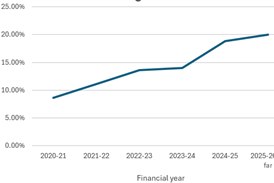In his fourth weekly update for HSJ and Nursing Times, national director for NHS flu resilience Ian Dalton discusses the revised planning assumptions for the pandemic
What should NHS staff be focusing their efforts on?
On 3 September the Cabinet Office published a revised set of planning assumptions for the swine flu pandemic. These figures are based on further scientific evidence and replace the previous set of assumptions published in July.
The revised assumptions, which are projections and not predictions, show that the estimates of the worst case scenario in the current pandemic are lower than previously thought. While the virus remains mild in most cases, the estimated clinical attack rate in the revised figures remains at 30 per cent of the population, but the hospitalisation figures have been revised down to 1 per cent and the fatality rates reduced to 0.1 per cent.
The next steps
This is good news, and we can cautiously welcome these figures.
However, we cannot be complacent. Although lower than previous estimates, the figures are based on a worst case scenario and, if realised, that scenario will still put the NHS under much pressure.
These revised assumptions contain nothing to suggest that our strategy to be as prepared as possible for a second, potentially more aggressive attack wave in the autumn is the wrong one. On that basis my message to all managers and clinical staff is to continue their efforts to ensure optimum preparedness. It is right that we continue to plan for the worst case scenario.
Scientists will continue to monitor the planning assumptions and review them as we learn more about this virus.
Progress to date
The current number of cases of reported swine flu is once again decreasing, as are the weekly GP consultation rates. The HPA has published its weekly figures, where you can find more details about hospitalisations and deaths.



























1 Readers' comment